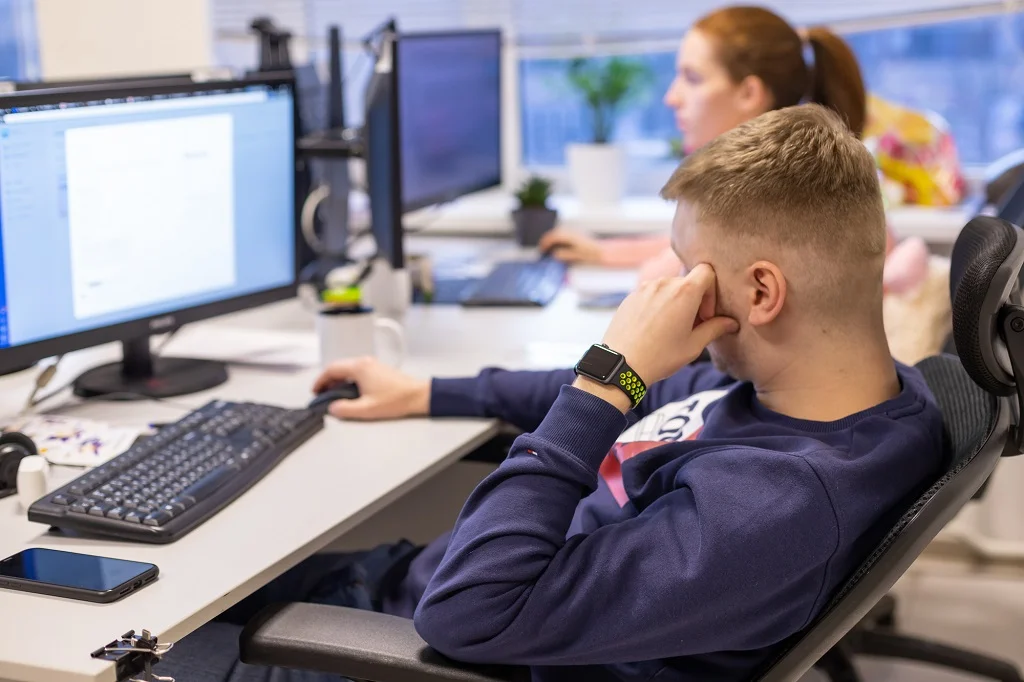Moreover, the majority of VR systems and related research targets users of non-tonal languages, with little consideration of cross-cultural and cross-linguistic differences. As tonal languages are estimated to represent 60-70% of the world’s languages [200], more efforts and studies are needed to include autistic children speaking tonal languages, so that a more global picture, having linguistic and cultural diversity, can be obtained for VR-driven education and intervention. The worldwide rising trend of autism spectrum disorder (ASD) calls for innovative and efficacious techniques for assessment and treatment. Virtual reality (VR) technology gains theoretical support from rehabilitation and pedagogical theories and offers a variety of capabilities in educational and interventional contexts with affordable products. VR is attracting increasing attention in the medical and healthcare industry, as it provides fully interactive three-dimensional simulations of real-world settings and social situations, which are particularly suitable for cognitive and performance training, including social and interaction skills.
In school education, VR technology offers various capabilities that contribute to better learning and education outcomes. It helps learners to visualize abstract concepts and their dynamic relationships and allows learners to visit and interact with people and events that are otherwise inaccessible or unfeasible because of time, distance, cost, or safety problems [34]. VR- and AR-based interactive learning environments have been found to be useful, especially for primary/elementary level education [49]. In addition to the above technical limitations, inadequacies exist regarding learning content and activity design.
Can Virtual Reality Assist Special Needs Students?
Their model analyzes three levels of decreasing functioning and cognitive impairment in children with autism, including attention, reasoning, emotion, social behavior, language understanding, and decision making, aiming to improve their what is virtual reality in education mental states and life skills. VR gamified design can promote our understanding of the lower-functioning ASD population and the support that they need. A majority of existing studies and training programs have shown promising results.

From the viewpoint of cognitive science, studies have found that virtual experiences improve cognitive flexibility outside of the digital intervention. These studies suggest that the user’s brain can form new anatomical functionality, their neural connections rerouting while in the virtual environment. This is what’s known as the brain’s functional plasticity, and this not only improves the ability to generalize what’s been learned while in the virtual world but also allows for those improved skills to be perpetuated outside of it. “Our idea is to use virtual reality to explicitly teach students these social competency skills and how to generalize them in their natural environments.
How can virtual reality help students?
While a specialized medical professional should supervise both children and adults during treatment, adults become their own progress monitors. The Jonas Hill Hospital & Clinic recommends several strategies to help adults manage learning disabilities while still achieving success in their personal and professional lives. One of them is setting attainable, realistic goals that will encourage the patient to conquer everyday challenges first instead of overwhelming loftier goals. They practice medical procedures in virtual reality environments before conducting them for real. This works out to be far more cost and space effective than providing these facilities and scenarios for every student. But for a virtual world to be an effective learning tool, it needs to manage both to saturate the senses and maintain a sense of realism – what Ehrlich refers to as the level of presence in a virtual environment, the weight and reality of simply being there.
Think of us for your VR learning solutions to get the best of the industry’s 360° virtual simulations relevant to your individual needs. The sense of being present, which is positively correlated with the level of immersion [115], also contributes greatly to the potential of using VR for the investigation of social communication and interaction. Practical application is indispensable for the training of social communication skills, with the benefits of intervention, which are usually reduced when exposure to real-world social interactions is absent or inadequate [116]. Individuals with autism have reported a desire for more real-world practice after learning social communication skills in clinical intervention because they sometimes find it difficult to understand a social phenomenon until they see or experience it in a real-world setting [116]. Practicing a learned skill in a real-world context, and being successful in that situation, would also build confidence in people with ASD and help reduce their social anxiety [116].
Examples and applications of virtual reality in education
For students with diverse special needs and learning styles arising from other disabilities, VR can help accommodate learning experiences. By way of instance, VR is a powerful tool for helping autistic kids learn social interaction and nonverbal cues in individualized environments. Virtual environments or input stimuli are manageable to match exactly what is tolerable to the student.
Though VR technology has improved tremendously in recent years, certain technical imperfections still exist, such as the graphic update rate, field of view (for HMDs), and lags between head tracking and visualization [160,161]. Besides these limitations, a particular technical challenge for VR applications is the simulation of behaviorally realistic virtual avatars. Current VR technology has been capable of creating vivid and lifelike avatars but they are inevitably different from real humans in either appearance or behavior.
What is an immersive classroom?
The immersive environment of a VR experience can promote sustained focus and attention. Further, VR could provide people with ADHD the high levels of stimulation, and immediate, realistic responses to behavior in the virtual world that would make them feel more comfortable and less anxious. Virtual reality (VR) offers all sorts of wondrous opportunities when it comes to making learning more accessible for folks with disabilities. What makes it such a game-changer is its ability to fully immerse people in safe, controlled, 360-degree virtual environments.
- The availability of VR apps is increasing dramatically, and with every new piece of software, another avenue is opening up for learners.
- Individuals with autism have reported a desire for more real-world practice after learning social communication skills in clinical intervention because they sometimes find it difficult to understand a social phenomenon until they see or experience it in a real-world setting [116].
- VR offers great potential for social communication research and intervention as it can provide customized authentic scenarios and interlocutors, which are essential in real-life social communication, as well as the sense of being present at the scene of communication.
- According to the fifth edition of the DSM criteria, the age of ASD onset is “early childhood” [1], and the symptoms usually persist through the school ages and are maintained into young adulthood [102], which renders the education of young people with ASD a primary concern and an intractable undertaking.
- It is usually when someone notices that a child’s intellect does not match their performance in school that the possibility of having a learning disability is considered.
- Lorenzo, et al. [141] conducted a randomized controlled study in which they designed an immersive virtual reality system (IVRS) to train and improve the emotional skills of 40 children with ASD.
This review article offers a summary of current perspectives and evidence-based VR applications for children with ASD, with a primary focus on social communication, including social functioning, emotion recognition, and speech and language. Existing VR-based training systems and platforms have paid much attention to improving ASD individuals’ performance in social functioning, emotion processing, and speech and language. However, a majority of them treated these socially important aspects independently and designed training programs that centered around one specific aspect; few https://www.globalcloudteam.com/ have taken an integrated view of these skills to systematically enhance social communication in ASD. For example, VR-based intervention programs and systems for speech and language training have focused on grammar and vocabulary, semantics, or pronunciation, but rarely attempt to integrate these components of language communication skills into one training system. Many training programs, though proven to be effective in improving ASD trainees’ specific skills, often meet with limited success in enhancing the overall social performance of the ASD population [175,176,177].
How to Study Online: 16 Tips & Tricks
VR technology gains theoretical support from rehabilitation and pedagogical theories with powerful and diverse capabilities. When it is instantiated in accessible and affordable commercial products, VR is a great alternative technique for ASD research and therapy and a promising methodological tool to investigate and improve social communication and interaction skills. The promising prospect of technology-driven pedagogical and intervention platforms has prompted researchers to integrate VR technologies into ASD assessment and intervention, with success, especially in terms of social communication deficits. This section illustrates recent evidence-based applications of VR technologies to ASD research and treatment, with a primary focus on the social aspects, including social functioning, emotion recognition, and speech and language.

“We are purposefully developing in the web and in headsets so that there is greater access to the benefits of VR and also because many students with Autism do not want things on their face. So, students will be able to use the system wherever they have access to a web-enabled device. At this time, high powered VR headsets are not commonplace in schools or many homes. Education can become a more transformative experience for learners of all abilities with the growth and development of VR and AR technology in education. Instead of dissecting a frog or a pig’s heart a few times in a lab, students can do it hundreds of times in a digital world, which improves the accessibility of science education. Instead of conducting dangerous experiments with toxic substances in-person, researchers can safely simulate these experiments with XR.
Social Benefits and Increased Self-Esteem
Theoretical support for the use of interactive media like VR for intervention stems from two basic facts. Second, it provides enhanced experiences that are fully controlled and may be better suited for repeated practice. For instance, cognitive rehabilitation theory (CRT) is based on neuropsychological and cognitive psychological models [30]. Following these fundamental ideas, researchers and practitioners have attempted to develop therapies and build models for clinical rehabilitation and intervention. For example, Dhamodharan, et al. proposed an evidence-based cognitive and occupational therapy using an interactive VR environment [8].





